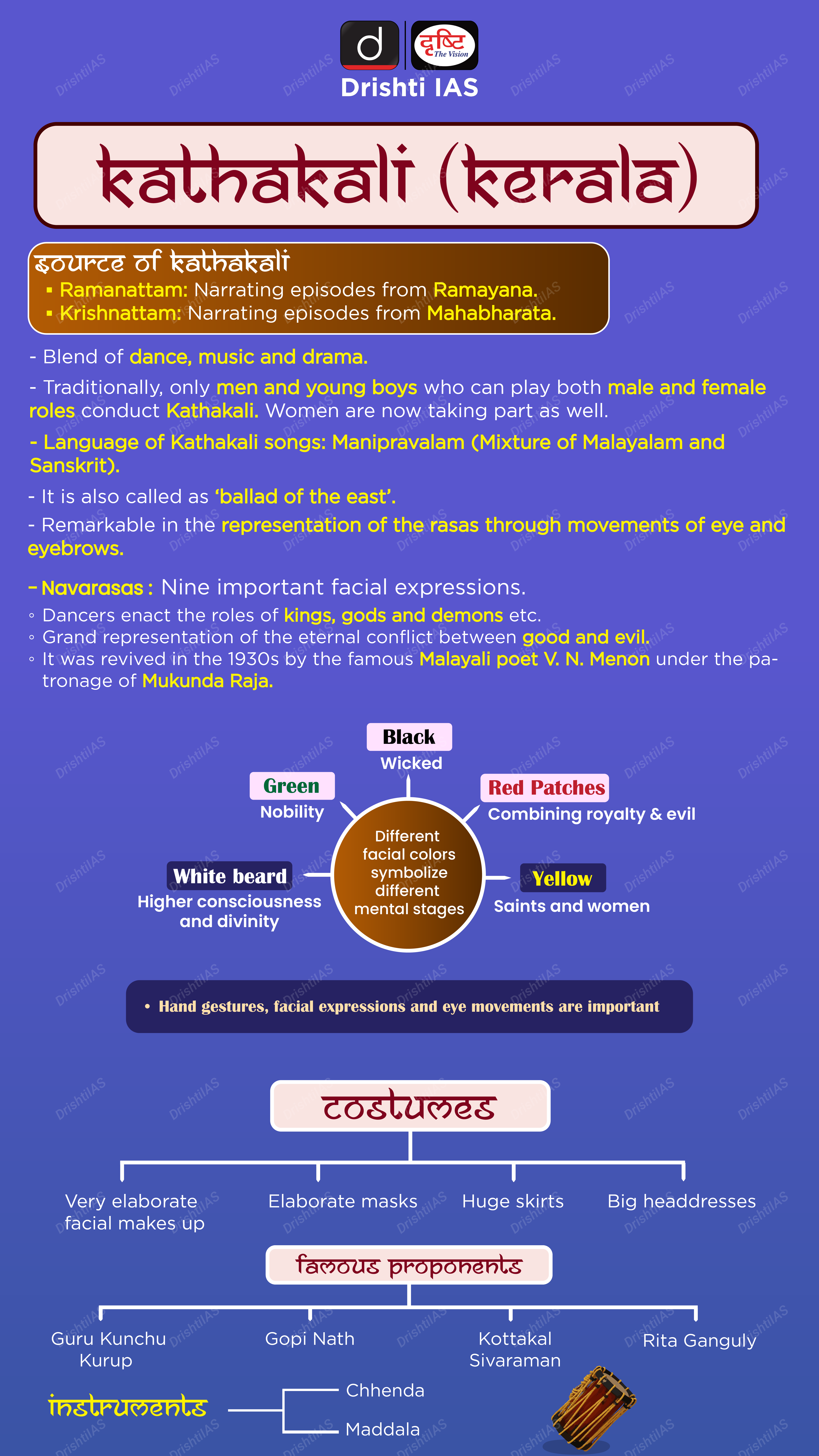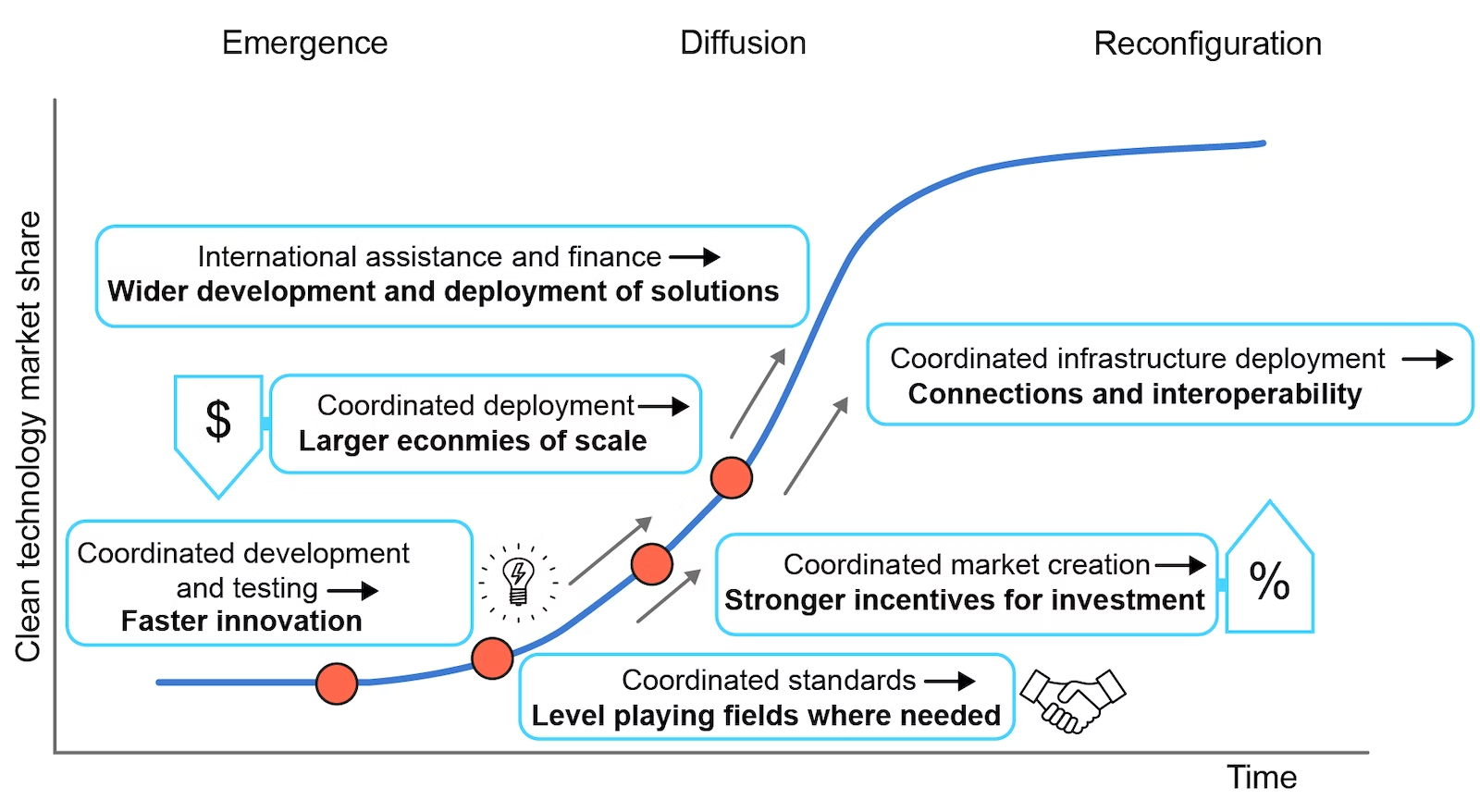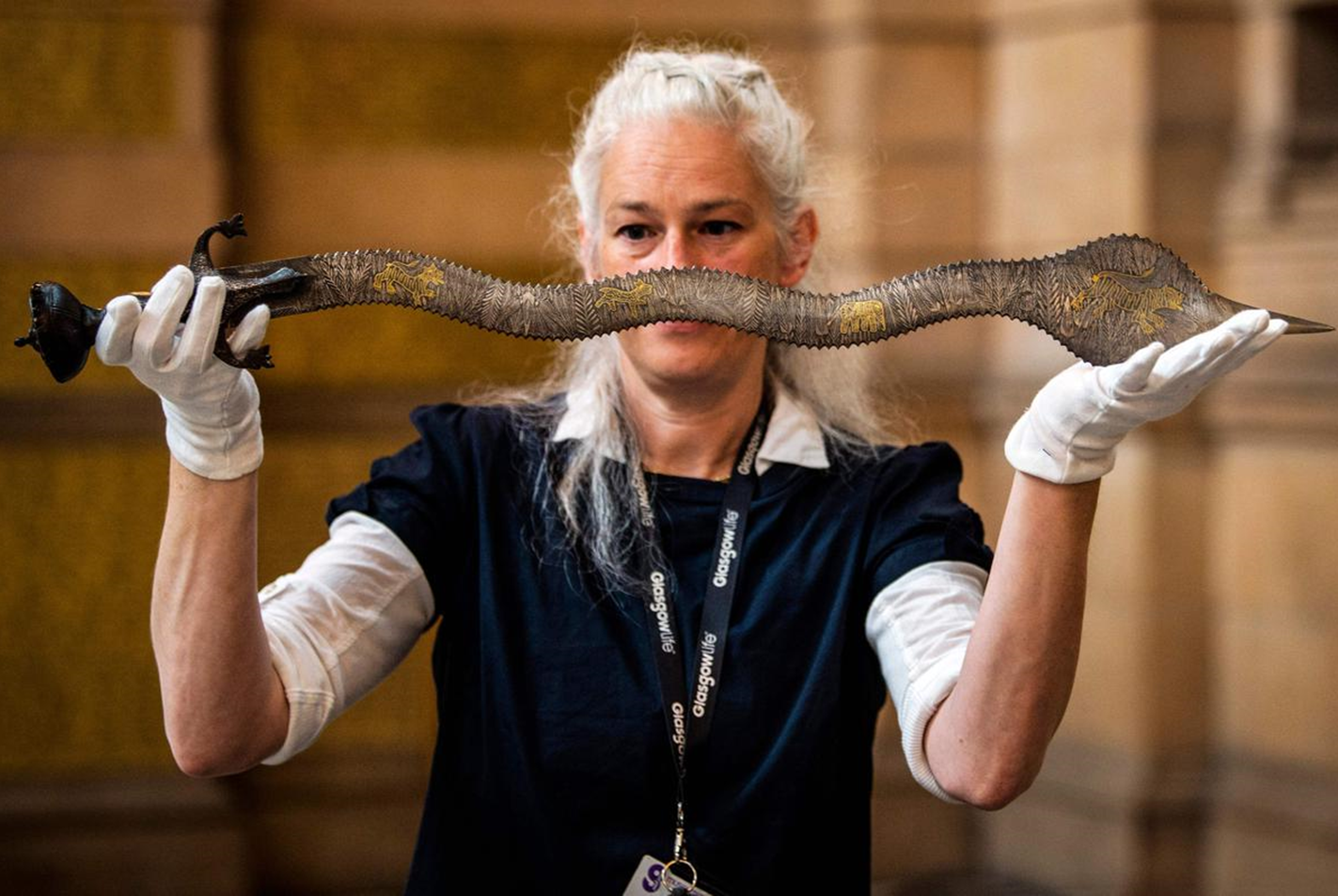Infographics
Biodiversity & Environment
Breakthrough Agenda Report 2022
For Prelims: IEA, IRENA, Climate Change, COP26, Paris Agreement
For Mains: Breakthrough Agenda Report 2022 and its Recommendations
Why in News?
Recently, The Breakthrough Agenda Report 2022 was released by the International Energy Agency (IEA), the International Renewable Energy Agency (IRENA) and the UN Climate Change High-Level Champions, focusing on international collaboration to drive faster reductions in greenhouse gas emissions.
What are the Key Points of the Report?
- About:
- It assesses progress on reducing emissions in five key sectors – power, hydrogen, road transport, steel and agriculture.
- It is a first-of-its-kind annual progress report, requested by world leaders at the UN Climate Change Conference COP26 in November 2021 as part of the launch of the Breakthrough Agenda.
- The Breakthrough Agenda currently covers more than two-thirds of the global economy, with endorsement from 45 world leaders, including those of the G7, China and India.
- Findings:
- There is an increase in practical international cooperation in recent years, and progress in deploying the technologies needed, including a forecast increase in global renewable capacity of 8% in 2022 – pushing through the 300GW mark for the first time and equivalent to powering approximately 225 million homes.
- The five sectors analyzed in the report together account for nearly 60% of global greenhouse gas (GHG) emissions, and may deliver the bulk of the emission reductions needed by 2030 in a pathway that would make a significant contribution to limiting global warming to a maximum of 1.5°C, in line with the Paris Agreement goals.
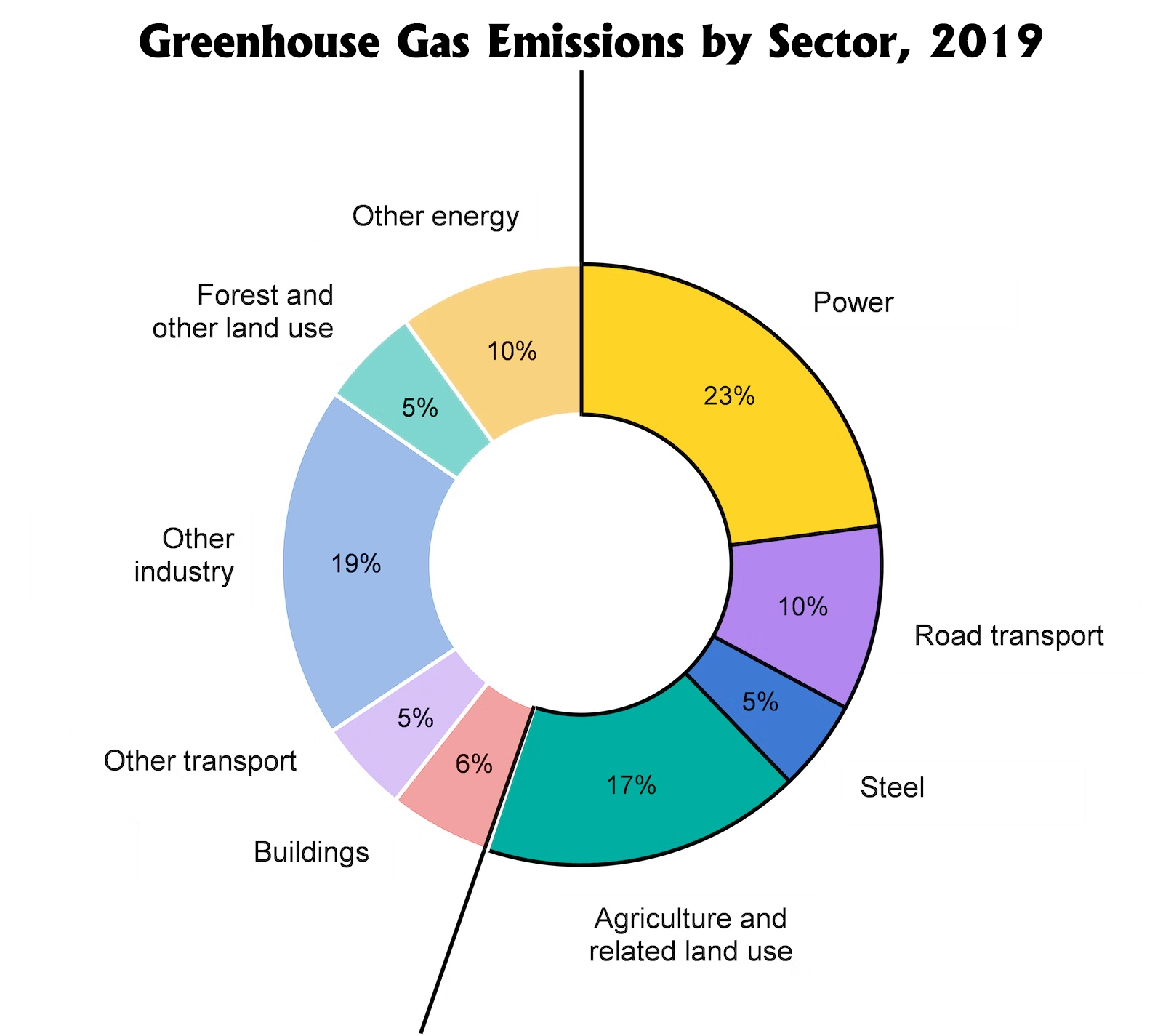
- World is in the midst of the first truly global energy crisis, with devastating knock-on consequences across the world economy, especially in developing countries.
- The energy crisis has emerged in oil, gas and electricity markets and aggravated by Pandemic, Oil Prices and Russia-Ukraine conflict.
- The energy and climate crisis has exposed the weaknesses and vulnerabilities of a system heavily reliant on fuels of the 20th century.
- Recommendations:
- Demonstrate and test flexible low-carbon power systems to expand the range of solutions and increase the share of variable renewables
- Create new cross-border supergrids this decade to increase trade in low-carbon power, reduce emissions, improve energy security and enhance system flexibility
- Set up new international centres of expertise to channel finance and technical assistance to help coal-producing countries’ transition
- Agree a common definition and target dates by which all new road vehicles will be net zero, targeting 2035 for cars and vans and the 2040s for heavy duty vehicles
- Mobilise investment in charging infrastructure, including prioritised assistance for developing countries and harmonise international charging standards to drive investment and accelerate adoption globally
- Standards to boost the recyclability of batteries and supercharging research into alternative chemistries for batteries to reduce reliance on precious metals, such as cobalt and lithium.
- Government policies and private-sector purchase commitments to drive demand and deployment of low-carbon and renewable hydrogen alongside standards to enable global trade
- Investment for agriculture technologies and farming practices that can cut emissions from livestock and fertilisers, expand availability of alternative proteins and accelerate the development of climate resilient crops.
UPSC Civil Services Examination Previous Year Question (PYQ)
Q. Describe the major outcomes of the 26th session of the Conference of the Parties (COP) to the United Nations Framework Convention on Climate Change (UNFCCC). What are the commitments made by India in this conference? (2021)
Q. Discuss global warming and mention its effects on the global climate. Explain the control measures to bring down the level of greenhouse gases which cause global warming, in the light of the Kyoto Protocol, 1997. (2022)

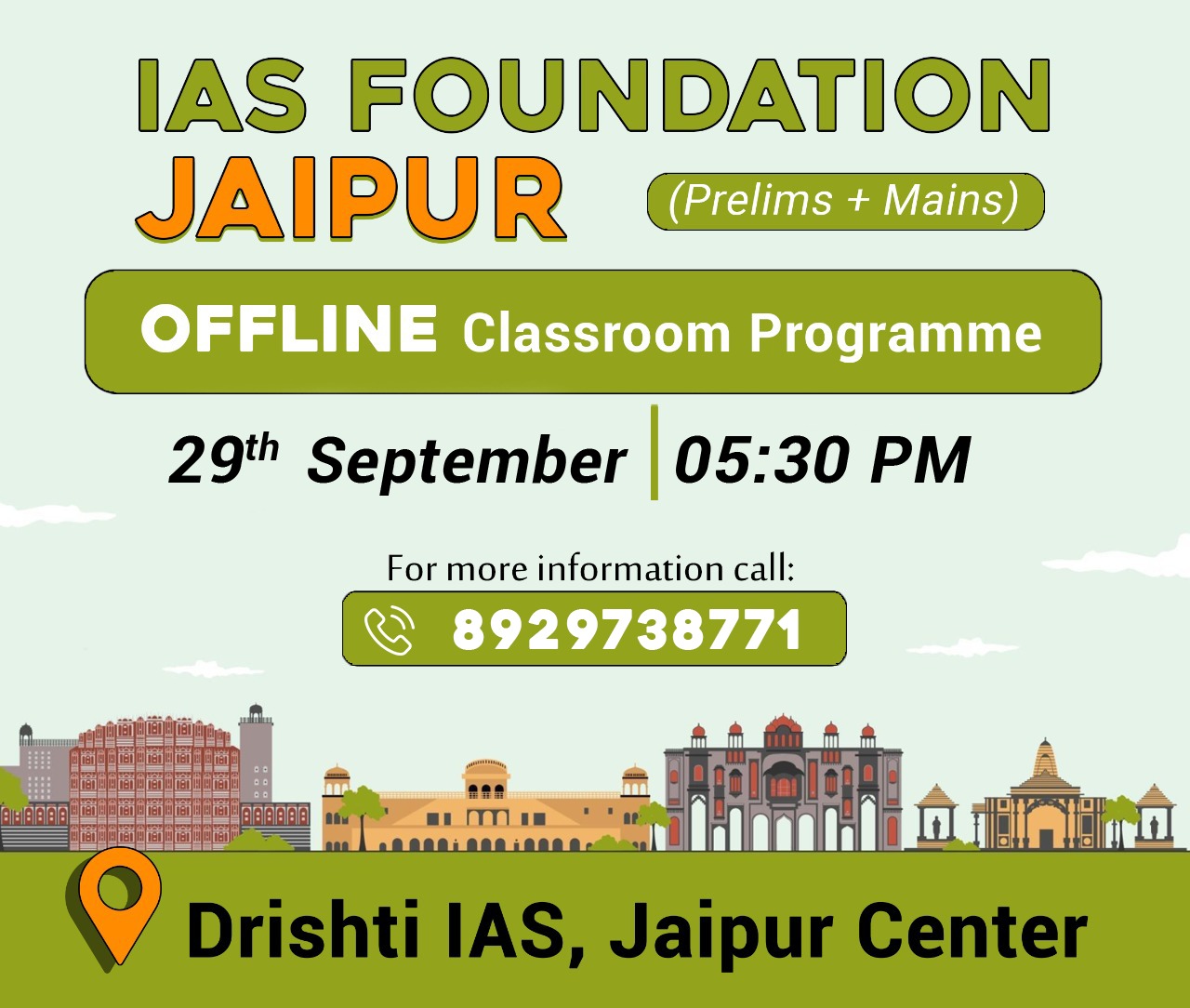
Geography
Dvorak Technique
For Prelims: Dvorak Technique of Weather Forecasting, Cloud Pattern Recognition Technique, Meteorology.
For Mains: Dvorak Technique and its Utility today.
Why in News?
Recently, the American meteorologist Vernon Dvorak passed away, on whom Dvorak Technique was named to forecast Weather.
- Dvorak was an American meteorologist best credited for developing the Dvorak (read as Do-rak) technique in the early 1970s.
What is the Dvorak technique?
- The Dvorak technique is a Cloud Pattern Recognition Technique (CPRT) based on a concept model of the development and decay of the tropical cyclone.
- It was first developed in 1969 and tested for observing storms in the northwest Pacific Ocean.
- In this methodology, available satellite images obtained from polar orbiting satellites are used to examine the features of the developing tropical storms (hurricanes, cyclones and typhoons).
- During day time, images in the visible spectrum are used while at night, the ocean is observed using infrared images.
- From the satellite images the technique helps forecasters do a pattern recognition from the observed structure of the storm, locate its eye and estimate the intensity of the storm.
- Although it cannot help make any predictions, measure wind or pressure or any other meteorological parameters associated with the cyclone, it is a guide to estimate the storm’s intensity and possible intensification — which is crucial for local administration in planning evacuation measures of coastal or other nearby residents.
Why is Technique still Widely in Use?
- Even having an improved network of land-based meteorological observations, ocean observations still remain limited.
- There are many regions across the four oceans that have not been fully examined with meteorological instruments.
- Ocean observations are mostly taken by deploying buoys or dedicated ships, but the number of observations from the seas is still not sufficient across the world.
- That is why meteorologists have had to depend more on satellite-based imageries, and combine it with the available ocean-data at the time of forecasting the intensity and wind speed of the tropical cyclones.
- The Dvorak technique has undergone several advancements since its inception. Even in the present day, when forecasters have access to several state-of-the-art tools like model guidance, animations, artificial intelligence, machine learning and satellite technology, it is the advanced versions of the Dvorak technique that continues to be widely used.
UPSC Civil Services Examination Previous Year Question (PYQ)
Prelims
Q1. Consider the following statements: (2020)
- Jet streams occur in the Northern Hemisphere only.
- Only some cyclones develop an eye.
- The temperature inside the eye of a cyclone is nearly 10ºC lesser than that of the surroundings.
Which of the statements given above is/are correct?
(a) 1 only
(b) 2 and 3 only
(c) 2 only
(d) 1 and 3 only
Ans: (c)
Exp:
- Jet Stream is a geostrophic wind blowing horizontally through the upper layers of the troposphere, generally from west to east, at an altitude of 20,000 - 50,000 feet. Jet Streams develop where air masses of different temperatures meet. So, usually surface temperatures determine where the Jet Stream will form. Greater the difference in temperature, faster is the wind velocity inside the jet stream. Jet Streams extend from 20° latitude to the poles in both hemispheres. Hence, statement 1 is not correct.
- Cyclones are of two types, tropical cyclone and temperate cyclone. The center of a tropical cyclone is known as the ‘eye’, where the wind is calm at the center with no rainfall. However, in a temperate cyclone, there is not a single place where winds and rains are inactive, so the eye is not found. Hence, statement 2 is correct.
- The warmest temperatures are found in the eye itself, not in the eyewall clouds where the latent heat occurs. The air is saturated only where convective vertical motions pass through flight level. Inside the eye, the temperature is greater than 28°C and the dewpoint is less than 0°C. These warm and dry conditions are typical of the eyes of extremely intense tropical cyclones. Hence, statement 3 is not correct.
- Therefore, option (c) is the correct answer.
Q2. In the South Atlantic and South-Eastern Pacific regions in tropical latitudes, cyclone does not originate. What is the reason? (2015)
(a) Sea surface temperatures are low
(b) Inter-Tropical Convergence Zone seldom occurs
(c) Coriolis force is too weak
(d) Absence of land in those regions
Ans: (b)
Exp:
- The most proximate reasons for the lack of cyclones in the South Atlantic and South Eastern Pacific ocean is the rare occurrence of the Inter-Tropical Convergence Zone (ITCZ) over the region.
- It becomes very difficult or nearly impossible to have genesis of tropical cyclones, unless synoptic vorticity (it is a clockwise or counterclockwise spin in the troposphere) and convergence (i.e., large scale spin and thunderstorm activity) are provided by ITCZ.
- Therefore, option (b) is the correct answer.
Mains
Q. Discuss the meaning of colour-coded weather warnings for cyclone prone areas given by India Meteorological department. (2022)

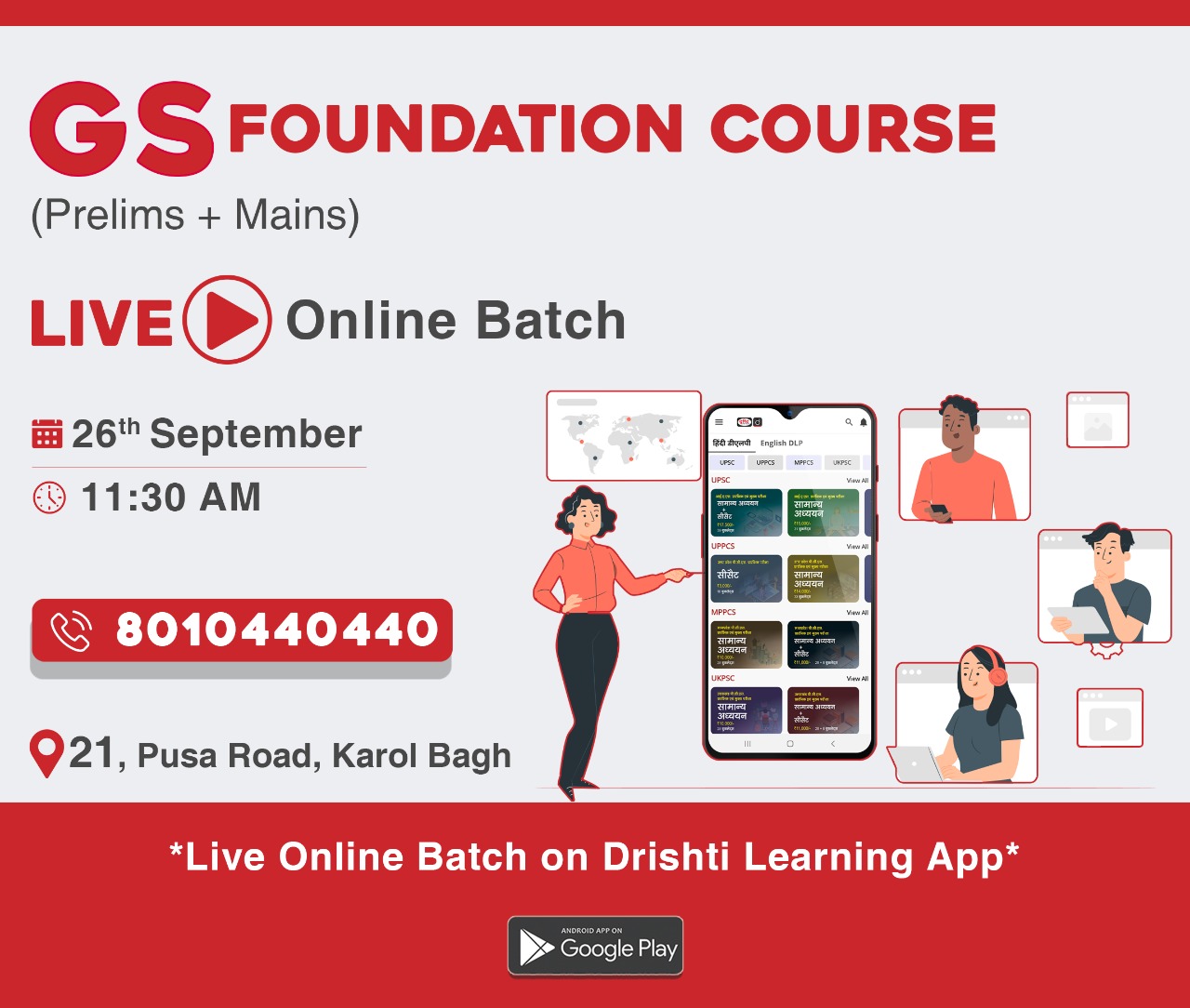
Ethics
Ethical Issues due to Weather Modifications
For Mains: Weather Modifications and related issues
Why in News?
China has conducted over half a million weather-modification operations between 2002 and 2012.
- In 2020, China announced its plan to expand its weather-modification programme to generate artificial rain or snowfall over an area exceeding 5.5 million square kilometres — more than1.5 times the total size of India.
- Many countries have researched and deployed cloud seeding to deal with water scarcity, ecological crisis and food security.
What is Weather Modification?
- Weather modification (also known as weather control) which is a part of geoengineering is the act of intentionally manipulating or altering the weather.
- The most common form of weather modification is cloud seeding, which increases rain or snow, usually to increase the local water supply.
- Weather modification can also have the goal of preventing damaging weather, such as hail or hurricanes, from occurring; or of provoking damaging weather against the enemy, as a tactic of military or economic warfare like Operation Popeye, where clouds were seeded to prolong the monsoon in Vietnam.
What are the Ethical Issues due to Weather Modifications?
- The tragedy of the Commons:
- The 'tragedy of the commons' refers to the situation when individuals, acting rationally in their own self-interest, nonetheless act irrationally as a collective group by irreparably depleting a resource that is owned in common.
- China’s action is a potential example of 'the tragedy' on a global scale.
- Skewed Vulnerabilities:
- For many of the most vulnerable countries and people who are not a part of China’s actions regarding weather modification, appears to be seriously unfair and casts a notable shadow over the champions of environmental justice.
- Intergenerational Ethics:
- A branch of ethics called intergenerational ethics examines whether present-day humanity has a moral obligation to strive for environmental sustainability for the benefit of future generations.
What are the Impacts of Weather Modifications?
- Can Disrupt Monsoons:
- Injecting sulfate aerosols in the stratosphere above the Arctic to mimic volcano clouds, for example, can disrupt the monsoons in Asia and increase droughts, particularly in Africa, endangering food and water sources for two billion people.
- Also, excess snow produced from cloud seeding can result in deaths, triggering a human-induced disaster.
- Conflict of Interests:
- Technological modernization is considered the best solution to environmental problems, but in the absence of data, the technology acts as a precursor to man-made disasters.
- The authoritarian regime in China can control the viewpoints of all scientists.
- Some people regard geo-engineering as a quick solution to climate change. There is nothing wrong with looking at weather modification as an extension of geo-engineering, but we need more research to make it more precise.
What is Geoengineering?
- About:
- Geoengineering is a deliberate, large-scale intervention carried out in the Earth’s natural systems to reverse the impacts of climate change, according to the Oxford Geoengineering Programme.
- This involves techniques to physically manipulate the global climate to cool the planet.
- Categories:
- These techniques fall primarily under three categories:
- Solar Radiation Management (SRM): Solar geoengineering or ‘dimming the sun’ by spraying sulfates into the air to reflect sunlight back into space, cloud brightening or spraying saltwater to make clouds more reflective and more.
- Carbon Dioxide Removal (CDR): ocean fertilisation or the dumping of iron or urea to stimulate phytoplankton growth to absorb more carbon.
- CDR technologies such as carbon capture and storage (CCS), direct air capture (DAC) and bioenergy with carbon capture and storage (BECCS) are being proposed as a means to achieve ‘net zero’ emissions
- Weather Modification.
- These techniques fall primarily under three categories:
Way Forward
- Need an International Organisation:
- There is a need for an international organisation to govern weather-modification programmes.
- Weather modification occurs in the air, where there are no boundaries. This impacts international politics and we need more imagination to deal with geopolitics.
- There is a need for an international organisation to govern weather-modification programmes.
- More Research is needed:
- It is not like conducting experiments in a laboratory. So, we need more research to make it more precise.
- Besides social consequences, moral and ethical issues need to be discussed more.
- More Imagination is Needed:
- Weather modification occurs in the air, where there are no boundaries, which impacts international politics, and more imagination is needed to deal with geopolitics.
- It is not just about a border in the air but a certain kind of power that no human can control.
- The Earth system force or geophysical politics need to recognise that the Earth system force can play a role in international politics.

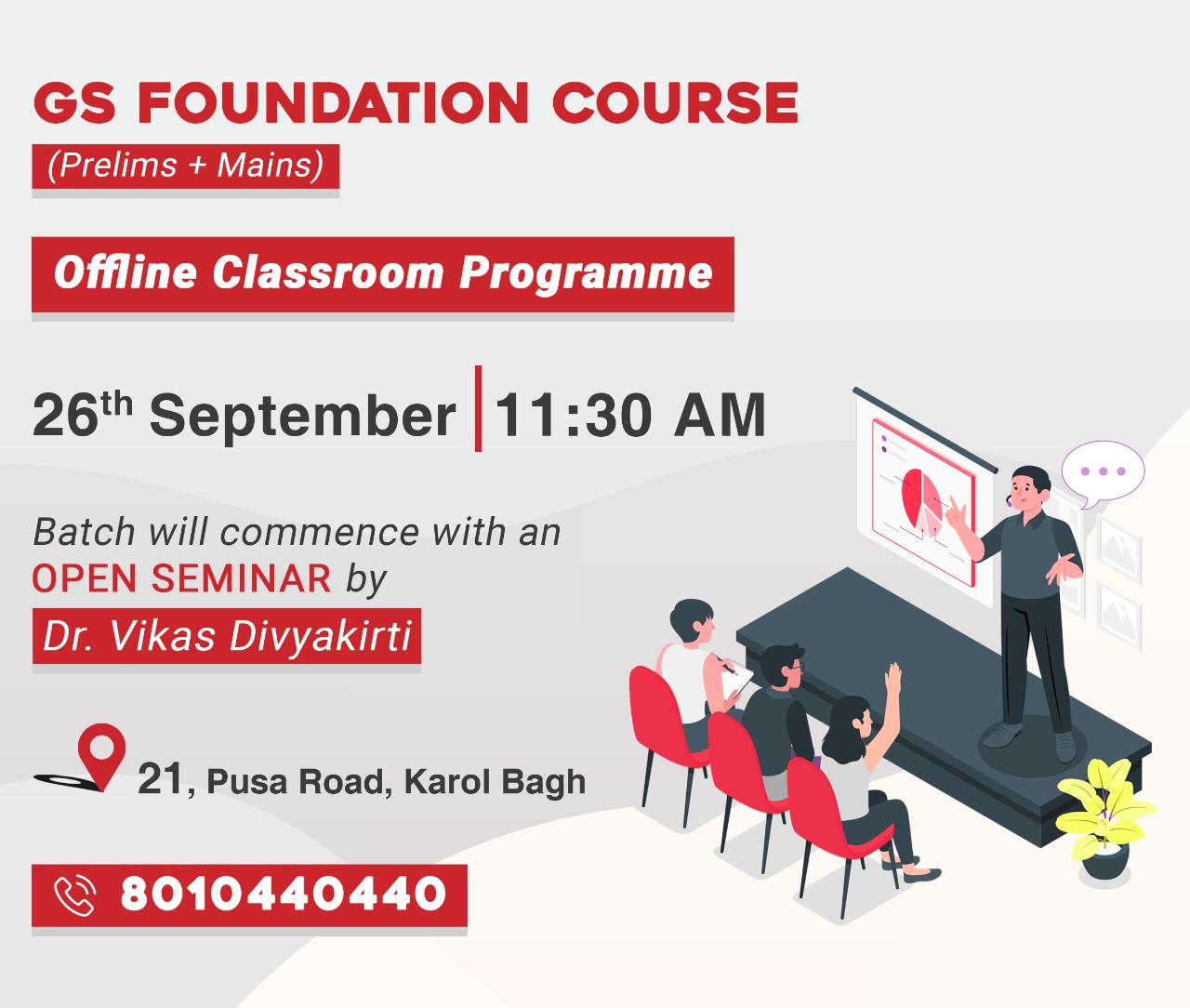
International Relations
Kyrgyzstan-Tajikistan Conflict
For Prelims: Kyrgyzstan-Tajikistan Conflict, Central Asia, Shanghai Cooperation Organization (SCO), International North South Transport Corridor (INSTC), UPSC, IAS, Previous Year Question.
For Mains: Significance of India’s Role in Central Asia.
Why in News?
Recently, nearly 100 people have been killed and scores injured in violent border clashes between Kyrgyzstan and Tajikistan.
What Led to the Clash between the Two Countries?
- Historical Legacy:
- The current clashes are replaying old pre- and post-Soviet era legacies.
- The borders of the two republics were demarcated under Joseph Stalin's leadership.
- Common Rights over Natural Resources: Historically, the Kyrgyz and Tajik populations enjoyed common rights over natural resources.
- The creation of the Soviet Union saw the large-scale redistribution of livestock to collective and state farms, which upset the existing status quo.
- Present Tussle:
- Recent incidents saw groups from either side planting trees in disputed areas and engaging in a physical confrontation using agricultural equipment as weapons.
- Currently, Ferghana Valley continues to be a site of struggle and frequent violent outbursts, with the location consisting primarily of Tajiks, Kyrgyz, and Uzbeks, who have historically shared common sociological specificities, economic activities, and religious practices.
- Both countries share multiple water channels with undulating trajectories and flow, which upset equitable access to water on both sides. As a result, small-scale conflicts occur practically every year during the crucial irrigation period.
- Kyrgyzstan and Tajikistan share 971 kilometers of border territory of which about 471 kilometers remain disputable.
- Leaders of both countries have contributed to the continuation of the conflict through the imagination of a particular type of development project which resulted in the large-scale displacement of nomadic communities, hoping to stabilise the internal dynamics of their respective countries and legitimise their power.
How are India-Tajikistan Relations?
- Cooperation in International Forums:
- In 2020, Tajikistan extended support for India’s candidature for a non-permanent seat in United Nation Security Council for the term 2021-22.
- Tajikistan strongly supported Shanghai Cooperation Organisation (SCO) Member status for India.
- India also supported Tajikistan’s candidature to United Nations’ Economic and Social Council (ECOSOC) and accession to WTO in March 2013.
- Development & Aid Partnership:
- Development Assistance:
- With a grant of USD 0.6 million, an Information and Technology Centre (Bedil Centre) was commissioned in 2006.
- The project ran for a full hardware cycle of 6 years and trained almost all first-generation IT experts in the government sector in Tajikistan.
- A project for setting up computer labs in 37 schools in Tajikistan was completed and delivered in August 2016.
- With a grant of USD 0.6 million, an Information and Technology Centre (Bedil Centre) was commissioned in 2006.
- Humanitarian Assistance:
- In June 2009, USD 200,000 cash assistance was given by India to overcome damage caused by floods in Tajikistan.
- After the outbreak of Polio in southwest Tajikistan, India provided 2 million doses of oral polio vaccine through UNICEF in November 2010.
- Development Assistance:
- Human Capacity Building:
- Since the establishment of the Indian embassy in Dushanbe in 1994, Tajikistan has been a beneficiary of the Indian Technical & Economic Cooperation Programme (ITEC).
- In 2019, under India-Central Asia Dialogue Process, some Tajik diplomats were trained at Foreign Service Institute, Delhi.
- Trade & Economic Relation:
- Indian exports to Tajikistan mainly consist of pharmaceuticals, medical preparations, cane or beet sugar, tea, handicraft and machinery.
- Indian pharmaceutical products occupy approximately 25% of Tajik market.
- Indian exports to Tajikistan mainly consist of pharmaceuticals, medical preparations, cane or beet sugar, tea, handicraft and machinery.
- Cultural & People-to-People Relation:
- Deep rooted historical and cultural linkages have helped expand and widen the relationship to a new level.
- Cooperation between the two countries encompasses all aspects of human endeavour with special focus on military and defence ties.
- Swami Vivekananda Cultural Centre in Dushanbe offers courses in Kathak & Tabla through teachers deployed by Indian Council for Cultural Relations from India. The centre also offers Sanskrit and Hindi language classes.
- In 2020 ‘My Life My Yoga’ video blogging competition saw participation from Tajikistan yoga enthusiasts.
- Deep rooted historical and cultural linkages have helped expand and widen the relationship to a new level.
- Strategic:
- India has an airbase at a place called Ayni, about thirty kilometres from Dushanbe. Over the years, it developed into an Indian Air Force (IAF) base known as Gissar Military Aerodrome (GMA).
Way Forward
- The path to resolution of the conflict will require warring groups to agree upon a common map.
- There is a need for the international community to make efforts to solve the dispute by involving elders in the communities, as historically, elders have been used to resolve conflicts.
UPSC Civil Services Examination Previous Year Question (PYQ)
Mains
Q. Critically examine the aims and objectives of SCO. What importance does it hold for India? (2021)


Indian Economy
International Year of Millets 2023
For Prelims: Millets and its Significance, UNEP FAO, Food Security
For Mains: International Year of Millets 2023 and its Significance
Why in News?
A series of pre-launch events and initiatives have been organized by the Ministry of Agriculture and Farmers Welfare as a run-up to the International Year of Millets 2023 to create awareness and a sense of participation in the country around the ancient and forgotten golden grains.
- Many events were launched such as ‘India's Wealth, Millets for Health’, Millet Startup Innovation Challenge, Mighty Millets Quiz, Logo and slogan contest etc.
What is IYM?
- About
- India's proposal to observe an International Year of Millets in 2023 was approved by the Food and Agriculture Organisation (FAO) in 2018 and the United Nations General Assembly has declared the year 2023 as the International Year of Millets.
- This was adopted by a United Nations Resolution for which India took the lead and was supported by over 70 nations.
- Objectives:
- Awareness of the contribution of millet to Food Security and nutrition.
- Inspire stakeholders to improve sustainable production and quality of millets.
- Focus on enhanced investment in research and development and extension services to achieve the other two aims.
What is Millet?
- About:
- Millet is a collective term referring to a number of small-seeded annual grasses that are cultivated as grain crops, primarily on marginal lands in dry areas in temperate, subtropical and tropical regions.
- Some of the common millets available in India are Ragi (Finger millet), Jowar (Sorghum), Sama (Little millet), Bajra (Pearl millet), and Variga (Proso millet).
- The earliest evidence for these grains has been found in Indus civilization and were one of the first plants domesticated for food.
- It is grown in about 131 countries and is the traditional food for around 60 crore people in Asia & Africa.
- India is the largest producer of millet in the world.
- It Accounts for 20 % of global production and 80% of Asia’s production.
- Global Distribution:
- India, Nigeria and China are the largest producers of millets in the world, accounting for more than 55% of the global production.
- For many years, India was a major producer of millets. However, in recent years, millet production has increased dramatically in Africa.
- Significance:
- Nutritionally Superior:
- Millets are less expensive and nutritionally superior to wheat & rice owing to their high protein, fibre, vitamins and minerals like iron content.
- Millets are also rich in calcium and magnesium. For example, Ragi is known to have the highest calcium content among all the food grains.
- Millets can provide nutritional security and act as a shield against nutritional deficiency, especially among children and women. Its high iron content can fight high prevalence of anaemia in India women of reproductive age and infants.
- Gluten-free a low glycemic index:
- Millets can help tackle lifestyle problems and health challenges such as obesity and diabetes as they are gluten-free and have a low glycemic index (a relative ranking of carbohydrate in foods according to how they affect blood glucose levels).
- Super Crop at Growing:
- Millets are Photo-insensitive (do not require a specific photoperiod for flowering) & resilient to climate change. Millets can grow on poor soils with little or no external inputs.
- Millets are less water consuming and are capable of growing under drought conditions, under non-irrigated conditions even in very low rainfall regimes.
- Millets have low carbon and water footprint (rice plants need at least 3 times more water to grow in comparison to millets).
- Nutritionally Superior:
- Initiatives Taken by Government:
- Initiative for Nutritional Security through Intensive Millet Promotion (INSIMP)
- Increase in Minimum Support Price (MSP): The government has hiked the Minimum Support Price of Millets, which came as a big price incentive for farmers.
- Further, to provide a steady market for the produce, the government has included millets in the public distribution system.
- Input Support: The government has introduced provision of seed kits and inputs to farmers, building value chains through Farmer Producer Organisations and supporting the marketability of millets.
UPSC Civil Services Examination Previous Year Question (PYQ)
Q. With reference to ‘Initiative for Nutritional Security through Intensive Millets Promotion’, which of the following statements is/are correct? (2016)
- This initiative aims to demonstrate the improved production and post-harvest technologies, and to demonstrate value addition techniques, in an integrated manner, with a cluster approach.
- Poor, small, marginal and tribal farmers have a larger stake in this scheme.
- An important objective of the scheme is to encourage farmers of commercial crops to shift to millet cultivation by offering them free kits of critical inputs of nutrients and micro irrigation equipment.
Select the correct answer using the code given below:
(a) 1 only
(b) 2 and 3 only
(c) 1 and 2 only
(d) 1, 2 and 3
Ans: (c)
Exp:
- ‘Initiative for Nutritional Security through Intensive Millets Promotion’ Scheme aims to demonstrate the improved production and post-harvest technologies in an integrated manner with visible impact to catalyse increased production of millets in the country. Besides increasing production of millets, the Scheme, through processing and value addition techniques, is expected to generate consumer demand for millet-based food products. Hence, statement 1 is correct.
- Technology demonstrations in compact blocks would be organized in selected districts for four categories of millets – sorghum, pearl millet, finger millet and small millets. Poor, small, marginal and tribal farmers have a larger stake in this scheme. Hence, statement 2 is correct.
- There is no such provision to encourage farmers of commercial crops to shift to millet cultivation. Hence, statement 3 is not correct.
- Therefore, option (c) is the correct answer.


Governance
Non-Communicable Diseases
For Prelims: World Health Organisation (WHO), non-communicable disease (NCD), Sustainable Development Goal, cardiovascular diseases (CVDs), Sustainable Development Goal, National Health Mission (NHM), Pradhan Mantri Swasthya Suraksha Yojana (PMSSY).
For Mains: Impacts of Non-Communicable Diseases.
Why in News?
Recently, the World Health Organisation (WHO) released its report “Invisible Numbers — The True Extent of Non-communicable Diseases and What To Do About Them”, which stated that every two seconds, one person under the age of 70 dies of a non-communicable disease (NCD) with 86% of those deaths occurring in low- and middle-income countries.
What are the Key Highlights of the Report?
- Globally, one in three deaths – 17.9 million a year – are due to cardiovascular diseases (CVDs).
- Two-thirds of the people with hypertension live in low- and middle-income countries, but almost half of the people with hypertension are not even aware they have it, it currently affects around 1.3 billion adults aged between 30 and 79.
- Major Diseases:
- Diabetes: One in 28 deaths - 2.0 million people a year – is due to diabetes.
- More than 95% of diabetes cases globally are of type 2 diabetes.
- Cancer: It causes one in six deaths – 9.3 million people a year, a further 44% of cancer deaths could have been prevented or delayed by eliminating risks to health.
- Respiratory Disease: It indicated that 70% of deaths due to chronic respiratory diseases could have been prevented or delayed by eliminating risks to health.
- Diabetes: One in 28 deaths - 2.0 million people a year – is due to diabetes.
- Further, Covid-19 highlighted the links between NCDs and infectious disease, with serious impacts on NCD care. In the early months of the pandemic, 75% of countries reported disruption to essential NCD services.
- As per WHO portal only a handful of countries were on track to meet the Sustainable Development Goal target to reduce early deaths from NCDs by a third by 2030.
What are Non-Communicable Diseases?
- About:
- Noncommunicable diseases (NCDs), also known as chronic diseases, tend to be of long duration and are the result of a combination of genetic, physiological, environmental and behavioural factors.
- The main types of NCD are cardiovascular diseases (such as heart attacks and stroke), cancers, chronic respiratory diseases (such as chronic obstructive pulmonary disease and asthma) and diabetes.
- Causes:
- Tobacco use, unhealthy diet, harmful use of alcohol, physical inactivity and air pollution are the main risk factors contributing to these conditions.
- Status of Non-Communicable Diseases in India:
- According to WHO, over 60.46 lakh people died due to NCDs in India in 2019.
- Over 25.66 lakh deaths in 2019 in the country were due to cardiovascular diseases while 11.46 lakh deaths were due to chronic respiratory diseases.
- Cancer led to 9.20 lakh deaths while 3.49 lakh deaths in the country were attributed to diabetes.
- Indian Initiatives:
- National Programme for Prevention and Control of Cancer, Diabetes, Cardiovascular Diseases and Stroke (NPCDCS) is being implemented under the National Health Mission (NHM).
- The Central Government is implementing the Strengthening of Tertiary Care Cancer facilities scheme to support the setting up of State Cancer Institutes (SCI) and Tertiary Care Centres (TCCC) in different parts of the country.
- Oncology in its various aspects has a focus in case of new AIIMS and many upgraded institutions under Pradhan Mantri Swasthya Suraksha Yojana (PMSSY).
- Affordable Medicines and Reliable Implants for Treatment (AMRIT) Deendayal outlets have been opened at 159 Institutions/Hospitals with an objective to make available Cancer and Cardiovascular Diseases drugs and implants at discounted prices to the patients.
- Jan Aushadhi stores are set up by the Department of Pharmaceuticals to provide generic medicines at affordable prices.
- Global:
- Agenda for Sustainable Development: As part of the 2030 Agenda for Sustainable Development, heads of state and government committed to develop ambitious national responses, by 2030, to reduce by one third premature mortality from NCDs through prevention and treatment (SDG target 3.4).
- WHO plays a key leadership role in the coordination and promotion of the global fight against NCDs.
- Global action Plan: In 2019, the World Health Assembly extended the WHO Global action plan for the prevention and control of NCDs 2013–2020 to 2030 and called for the development of an Implementation Roadmap 2023 to 2030 to accelerate progress on preventing and controlling NCDs.
- It supports actions to achieve a set of nine global targets with the greatest impact towards prevention and management of NCDs.
- Agenda for Sustainable Development: As part of the 2030 Agenda for Sustainable Development, heads of state and government committed to develop ambitious national responses, by 2030, to reduce by one third premature mortality from NCDs through prevention and treatment (SDG target 3.4).
Way Forward
- There is need for robust health system programmes that promote health, detect and control risk factors early and effectively, treat disease cost effectively and prevent untimely deaths.
- Further, NCDs need to be accorded higher priority in financial allocation and health system-strengthening initiatives with strong emphasis on primary care.
UPSC Civil Services Examination Previous Year Question (PYQ)
Prelims
Q. Brominated flame retardants are used in many household products like mattresses and upholstery. Why is there some concern about their use? (2014)
- They are highly resistant to degradation in the environment.
- They are able to accumulate in humans and animals.
Select the correct answer using the code given below:
(a) 1 only
(b) 2 only
(c) Both 1 and 2
(d) Neither 1 nor 2
Ans: (c)
Exp:
- Brominated Flame Retardants (BFRs) are mixtures of man-made chemicals that are added to a wide variety of products, to make them less flammable. They are commonly used in plastics, textiles and electrical/ electronic equipments.
- The BFRs are highly resistant to degradation in natural environment. Hence, 1 is correct.
- BFRs can be accumulated in humans and animals and can cause diabetes, neurobehavioral and developmental disorders, cancer, reproductive health effects and alteration in thyroid function. Hence, 2 is correct. Therefore, option (c) is the correct answer

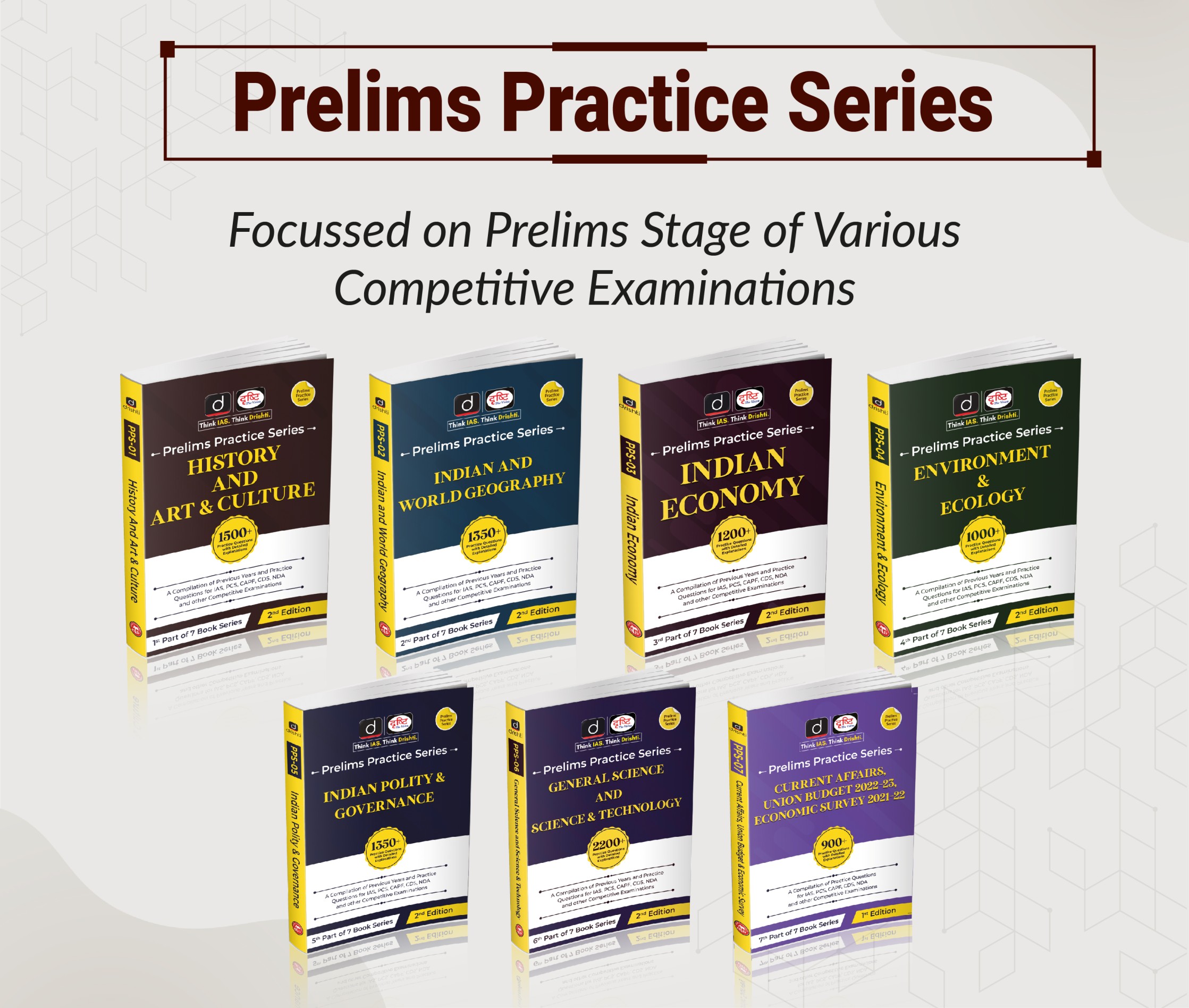
Important Facts For Prelims
Saturn’s Mysterious Rings & Extreme Tilt
Why in News?
According to a recent study, a pre-existing moon named Chrysalis likely left Saturn with its bright rings and extreme tilt.
What are the Key Highlights of the Study?
- Substantial Tilt: Saturn has a tilt of 26.73 degrees and is unlikely to have had a tilt during its formation stages.
- Currently, Neptune, Uranus and Saturn have a substantial tilt, suggesting that this feature did not arise during the formation stages.
- Reason for Tilt: Various theories suggest that Saturn got its tilt due to gravitational interactions with its neighbour Neptune.
- But the new study argues that Saturn is no longer under Neptune’s gravitational influence.
- Further, it stated that instead, Titan — Saturn’s largest satellite — may have been responsible, as per observations from NASA’s Cassini spacecraft, which orbited Saturn from 2004-2017.
- Titan’s Migration: Titan is migrating from Saturn at about 11 centimetres per year, 100 times faster than previous estimates.
- Titan’s fast migration caused the planet to tilt further, reducing Nepturn’s gravitational influence on Saturn.
- Role of Former Moon (Chrysalis): Scientists conducted simulations of the planet’s axis of rotation and how it has changed over time, it revealed that a former moon could be involved, as removing the moon gives Saturn its tilt, according to the model.
- Chrysalis likely orbited Saturn for several billion years, roughly 160 million years ago, Chrysalis became unstable and came too close to its planet. This encounter likely pushed the moon away or destroyed it.
What do we Know about Saturn?
- Saturn is the sixth planet from the Sun and the second largest planet in our solar system.
- Adorned with thousands of beautiful ringlets, Saturn is unique among the planets.
- It is not the only planet to have rings—made of chunks of ice and rock—but none are as spectacular or as complicated as Saturn's.
- Saturn has the highest number of satellites or moon, i.e., 82 in the solar system.
- Like fellow gas giant Jupiter, Saturn is a massive ball made mostly of hydrogen and helium.
- Few missions have visited Saturn: Pioneer 11 and Voyagers 1 and 2 flew by, But Cassini orbited Saturn 294 times from 2004 to 2017.
UPSC Civil Services Examination Previous Year Question (PYQ)
Prelims
Q Which of the following pairs is/are correctly matched? (2014)
| Spacecraft | Purpose | |
| 1. | Cassini-Huygens | Orbiting the Venus and transmitting data to the Earth |
| 2. | Messenger | Mapping and investigating the Mercury |
| 3. | Voyager 1 and 2 | Exploring the outer solar system |
Select the correct answer using the code given below:
(a) 1 only
(b) 2 and 3 only
(c) 1 and 3 only
(d) 1, 2 and 3
Ans: (b)
Exp:
- Cassini-Huygens was sent to study Saturn and its moons. It was a joint collaboration between NASA and European Space Agency. It was launched in 1997 and entered Saturn’s orbit in 2004. The mission ended in 2017. Hence, pair 1 is not correctly matched.
- Messenger, a spacecraft by NASA was sent to map and investigate Mercury. It was launched in 2004 and entered Mercury’s orbit in 2011. The mission ended in 2015. Hence, pair 2 is correctly matched.
- Voyager 1 and 2 were launched by NASA in 1977 to explore the outer solar system. Both the spacecrafts are still operational. Hence, pair 3 is correctly matched. Therefore, option (b) is the correct answer.


Important Facts For Prelims
BrahMos Missiles
Why in News?
Recently, the Ministry of Defense has signed a Rs 1700 crore contract with BrahMos Aerospace Pvt Ltd to buy additional dual-role capable BrahMos missiles for the Indian Navy.
- Dual role capability refers to the use of BrahMos missiles for land as well as anti-ship attacks. They can be launched from land, air and sea, and all three variants are in service in the Indian armed forces.
What is the Significance of the Deal?
- Induction of these dual-role capable missiles is going to significantly enhance the operational capability of Indian Navy fleet assets.
- The following contact is going to provide an important boost to indigenous production of the critical weapon system.
- The Brahmos missiles are also expected to enhance ammunition with the active participation of indigenous industry.
What are the BrahMos Missile?
- The BrahMos missile, an Indo-Russian joint venture, has a range of 290 km and is the fastest cruise missile in the world with a top speed of Mach 2.8 (nearly three times the speed of sound).
- BrahMos is named for the rivers Brahmaputra and Moskva.
- It is a two-stage (solid propellant engine in the first stage and liquid ramjet in second) missile.
- It is a multiplatform missile i.e., it can be launched from land, air, and sea and multi capability missile with pinpoint accuracy that works in both day and night irrespective of the weather conditions.
- It operates on the "Fire and Forgets" principle i.e it does not require further guidance after launch.
What are the Recent Development?
- In April 2022, an anti-ship version of the BrahMos supersonic cruise missile was successfully test-fired jointly by the Indian Navy and the Andaman and Nicobar Command.
- In January 2022, an extended range sea-to-sea variant of the BrahMos supersonic cruise missile was test fired from stealth guided missile destroyer INS Visakhapatnam.
UPSC Civil Services Examination Previous Year Question (PYQ)
Prelims
Q. What is “Terminal High Altitude Area Defense (THAAD)”, sometimes seen in the news? (2018)
(a) An Israeli radar system
(b) India’s indigenous anti-missile programme
(c) An American anti-missile system
(d) A defence collaboration between Japan and South Korea.
Ans: (c)
Exp:
- Terminal High Altitude Area Defence (THAAD) is an American anti-missile system designed to intercept and destroy short and medium-range ballistic missiles during their “terminal” phase of flight when they are falling towards the target.
- They have the ability to intercept missile inside and outside the atmosphere.
- It is interoperable with other ballistic missile defence systems and is highly mobile and deployable worldwide.
- Therefore, option (c) is the correct answer.
Mains
Q. How is S-400 air defence system technically superior to any other system presently available in the world? (2021)


Important Facts For Prelims
Return of Nizam’s Sword
Why in News?
A 14th century ceremonial sword that was sold in Hyderabad to a British General in the early 20th century is set to return to India.
- The sword is among the seven objects being repatriated by Glasgow Life, which manages Glasgow’s museums.
What do we Need to Know about the Sword?
- History of Sword:
- The sword was exhibited by Mahbub Ali Khan, Asaf Jah VI, Nizam of Hyderabad (1896-1911) at the 1903 Delhi or Imperial Durbar, a ceremonial reception held to commemorate the coronation of King Edward VII and Queen Alexandra as Emperor and Empress of India.
- The tulwar (sword) was purchased in 1905 by General Sir Archibald Hunter, Commander-in-Chief, Bombay Command (1903-1907), from Maharaja Sir Kishen Pershad Bahadur Yamin us-Sultanat, the Prime Minister of Hyderabad.
- Kishen Pershad hailed from the family of Maharaja Chandoo Lal, who was the prime minister for Nizam Sikander Jah twice.
- Kishen Pershad was known for his munificence where he was known to throw out coins to people chasing his motorcar.
- The tulwar was donated by Sir Hunter’s nephew, Mr. Archibald Hunter Service, to Glasgow Life museums’ collections in 1978.
- Features:
- The sword, shaped like a snake, has serrated edges and a damascene pattern, with gold etchings of an elephant and tigers.
- Other Indian Objects at Glasgow:
- Six of the items include several 14th Century carvings and 11th Century stone door jams. They were stolen from shrines and temples in the 19th Century.



